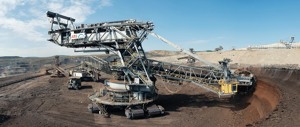Tavex uses cookies to ensure website functionality and improve your user experience. Collecting data from cookies helps us provide the best experience for you, keeps your account secure and allows us to personalise advert content. You can find out more in our cookie policy.
Please select what cookies you allow us to use
Cookies are small files of letters and digits downloaded and saved on your computer or another device (for instance, a mobile phone, a tablet) and saved in your browser while you visit a website. They can be used to track the pages you visit on the website, save the information you enter or remember your preferences such as language settings as long as you’re browsing the website.
| Cookie name | Cookie description | Cookie duration |
|---|---|---|
| tavex_cookie_consent | Stores cookie consent options selected | 60 weeks |
| tavex_customer | Tavex customer ID | 30 days |
| wp-wpml_current_language | Stores selected language | 1 day |
| AWSALB | AWS ALB sticky session cookie | 6 days |
| AWSALBCORS | AWS ALB sticky session cookie | 6 days |
| NO_CACHE | Used to disable page caching | 1 day |
| PHPSESSID | Identifier for PHP session | Session |
| latest_news | Helps to keep notifications relevant by storing the latest news shown | 29 days |
| latest_news_flash | Helps to keep notifications relevant by storing the latest news shown | 29 days |
| tavex_recently_viewed_products | List of recently viewed products | 1 day |
| tavex_compare_amount | Number of items in product comparison view | 1 day |
| Cookie name | Cookie description | Cookie duration |
|---|---|---|
| chart-widget-tab-*-*-* | Remembers last chart options (i.e currency, time period, etc) | 29 days |
| archive_layout | Stores selected product layout on category pages | 1 day |
| Cookie name | Cookie description | Cookie duration |
|---|---|---|
| cartstack.com-* | Used for tracking abandoned shopping carts | 1 year |
| _omappvp | Used by OptinMonster for determining new vs. returning visitors. Expires in 11 years | 11 years |
| _omappvs | Used by OptinMonster for determining when a new visitor becomes a returning visitor | Session |
| om* | Used by OptinMonster to track interactions with campaigns | Persistent |
| Cookie name | Cookie description | Cookie duration |
|---|---|---|
| _ga | Used to distinguish users | 2 years |
| _gid | Used to distinguish users | 24 hours |
| _ga_* | Used to persist session state | 2 years |
| _gac_* | Contains campaign related information | 90 days |
| _gat_gtag_* | Used to throttle request rate | 1 minute |
| _fbc | Facebook advertisement cookie | 2 years |
| _fbp | Facebook cookie for distinguishing unique users | 2 years |
The Risks and Opportunities for Mining and Metals in 2024

In 2024, the mining and metals industry faces a range of risks and opportunities. This article explores the key factors that will shape the industry’s path in the coming year.
As a vital contributor to the global economy, the mining and metals sector has traditionally supplied the raw materials essential for various industries. However, it now confronts challenges like regulatory uncertainty, supply chain disruptions, geopolitical tensions, and climate change concerns. Simultaneously, it enjoys the benefits of technological advancements, rising demand for critical minerals, sustainability initiatives, and the adoption of circular economy practices.
This article will dissect these elements, helping industry players navigate the intricate landscape of 2024. To succeed, businesses must remain agile and committed to responsible practices in a rapidly changing global market.
Key Risks

1. Regulatory Uncertainty
One of the prominent risks highlighted in various reports is regulatory uncertainty. Governments around the world are increasingly focusing on environmental and social regulations when perusing economic activities.
The shift towards sustainable mining practices and stricter environmental standards can pose challenges for the industry. Mining companies must adapt to evolving regulations or risk facing penalties and operational disruptions.
2. Supply Chain Disruptions

The global supply chain disruptions witnessed in recent years have had a significant impact on the mining and metals industry. From transportation bottlenecks to shortages of critical components, these disruptions can lead to production delays and increased costs.
Mining companies need to develop robust supply chain strategies to mitigate these risks and ensure uninterrupted operations of their goods and services.
3. Geopolitical Instability
Geopolitical tensions and trade disputes can disrupt the flow of raw materials and impact market dynamics
The mining sector is not immune to these challenges, as trade restrictions and geopolitical conflicts can lead to export restrictions and supply chain disruptions.
A stark reminder of this vulnerability was witnessed during the Covid-19 pandemic. The pandemic led to widespread supply chain disruptions, affecting various industries, including mining and metals. Lockdowns, border closures, and disruptions in international logistics exposed the industry’s susceptibility to unforeseen geopolitical events.
To mitigate these risks, companies should closely monitor geopolitical developments and diversify their supply sources to reduce vulnerability in the long term. This proactive approach helps them adapt swiftly and maintain a stable raw material flow.
4. Climate Change Risks
The growing emphasis on climate change and sustainability is reshaping the mining industry. Climate-related risks, such as extreme weather events and the transition to a low-carbon economy, can affect operations and investments.
Mining companies should invest in sustainable practices, renewable energy sources, and carbon reduction strategies to lower their carbon footprint and carbon emissions to align with global climate goals.
Key Opportunities

1. Technological Advancements
The adoption of advanced technologies, such as artificial intelligence, automation, and data analytics, presents significant opportunities for the mining and metals sector.
These technologies enhance operational efficiency, improve safety, and reduce costs. Companies that embrace digital transformation can gain a competitive edge in the industry.
2. Demand for Critical Minerals
The increasing demand for critical minerals and natural resources, essential for batteries, renewable energy, and electric vehicles, offers a lucrative opportunity for mining companies.
Investing in the exploration and extraction of these minerals can lead to substantial growth.
However, companies must also consider the environmental and ethical aspects of mining these resources while continuing to aim for sustainable development.
3. Sustainability and ESG Initiatives
In 2024, companies that prioritise sustainability and implement robust Environmental, Social, and Governance (ESG) initiatives can attract investors and gain a favourable reputation.
ESG-conscious investors are increasingly seeking ethical and sustainable investment opportunities in the mining sector
Companies that commit to sustainability and ESG send a clear message to investors and stakeholders, aligning their values with environmental and ethical governance concerns.
ESG-conscious investors are increasingly seeking such opportunities in the mining sector, offering a wider pool of capital and potential partnerships.
4. Circular Economy Practices
The shift towards a circular economy, where products are recycled and reused, creates opportunities for mining and metals companies to establish closed-loop supply chains.
Recycling and repurposing materials can reduce the industry’s environmental footprint by reducing the level of carbon dioxide and other greenhouse gas emissions, and lead to cost savings
Embracing circular economy principles can be a strategic advantage. Companies that can establish closed-loop supply chains and advertise their commitment to sustainability stand to attract a growing customer base that values eco-friendly practices.
Key Takeaways
As the mining and metals industry progresses into 2024, it faces a landscape filled with both risks and opportunities. Regulatory uncertainty, supply chain disruptions, geopolitical instability, and climate change risks demand careful planning and adaptability from industry players. However, technological advancements, the demand for critical minerals, sustainability and ESG initiatives, and the adoption of circular economy practices provide avenues for growth and prosperity.
Mining companies that navigate these challenges while capitalising on the available opportunities are poised to thrive in the evolving global landscape.
Staying informed, remaining agile, and committing to responsible and sustainable practices will be key to success in the mining and metals sector in 2024 and beyond.

















